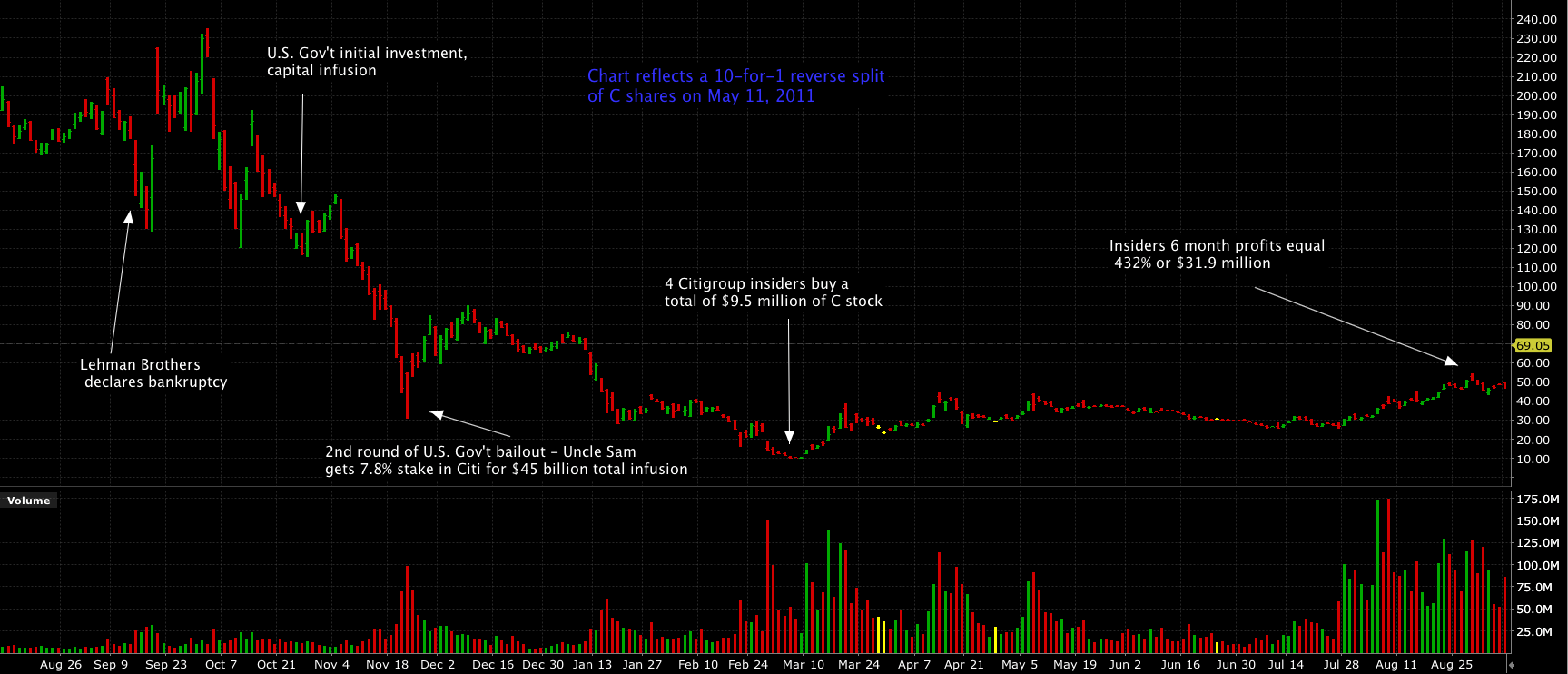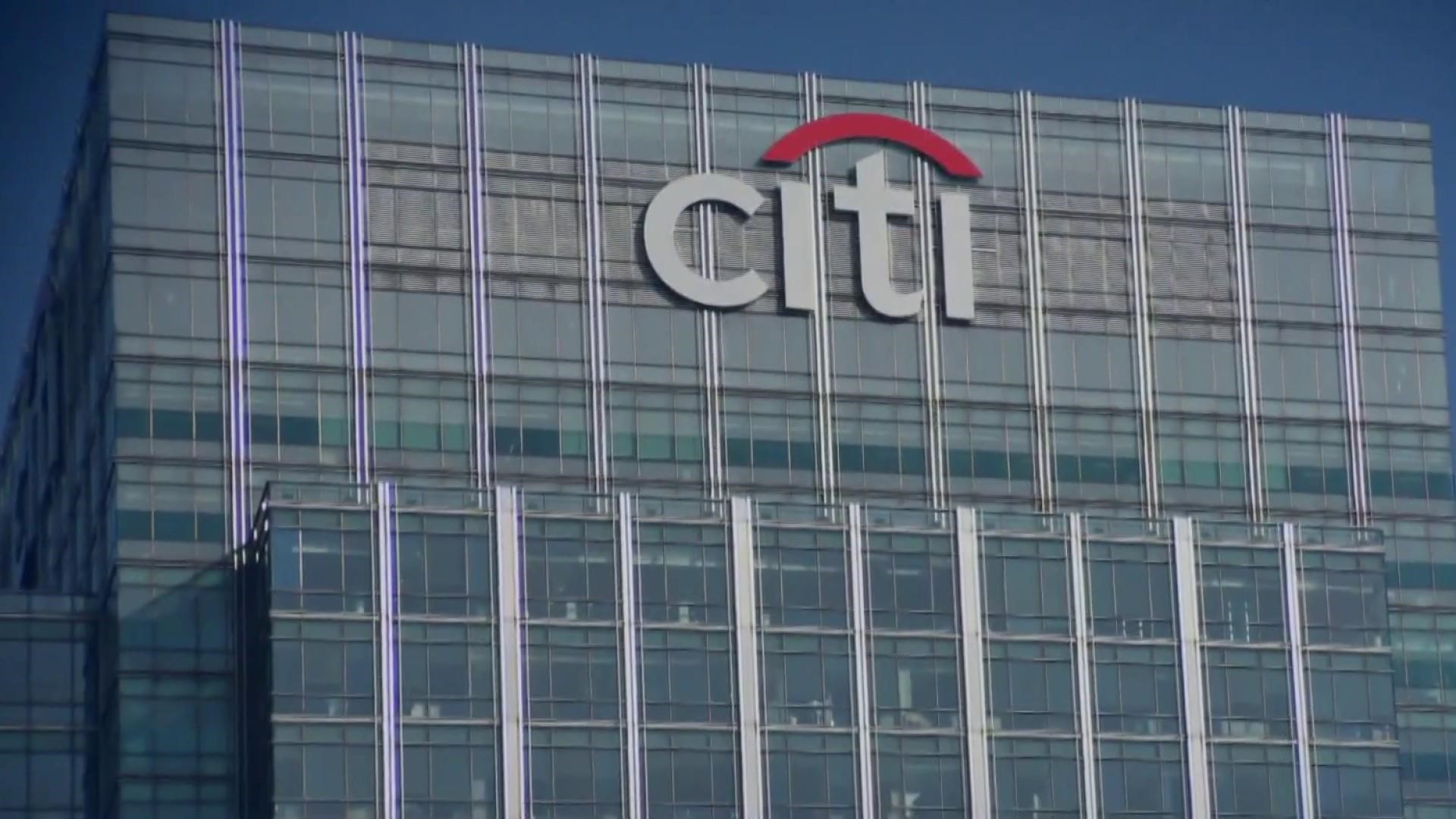On October 15, 2018, Citigroup (NYSE:C) reported Q3 2018 EPS of $1.73 on revenues of $18.39B, generally in line with expectations. Trading near $70, Citi has a market cap of $175 billion, and is one of the premiere U.S. financial institutions.
But roll the clock back nearly 9 ½ years to early March of 2009 and things weren’t so rosy for the bank. Back then, in the thick of the financial crisis, Reuters ran an article that began: “One dollar could buy a cup of coffee, a pack of chewing gum, or a roll of bathroom tissue. For the first time, it could also buy a share of Citigroup Inc., once the world’s largest bank by market value.”
With a market cap of barely $10 billion, Citi’s existence as a going concern was in doubt – despite capital infusions and guarantees by the U.S. government.
As we chronicled in our previous piece on Jamie Dimon and JPMorgan (NYSE:JPM), the seemingly overnight implosion of Lehman in September of 2008 shattered investor confidence in the global financial system, leaving investors to wonder which of the big banks would be next to fall, wiped-out by exposure to worthless sub-prime debt.
The U.S. government appeared to rescue Citi in October of 2008 when it injected $25 billion into the bank in exchange for preferred shares. The government didn’t want more banks going under like Bear Stearns, Lehman Brothers and Washington Mutual had. But in November of that year, after Citigroup reported huge write downs, slashed 52,000 jobs and its stock plunged 60%, Uncle Sam expanded its bailout with another $20 billion capital injection, including guarantees to keep the bank afloat. The government received stock and warrants to own nearly 8% of C stock.
In the three days after the expanded bailout announcement, C shares surged from $3.70 to as high as $9.00. But it didn’t last. Over the next 13 weeks, Citi stock was dumped relentlessly, until it approached penny-stock status. It seemed even the U.S. government couldn’t rescue shareholders.
But then came an interesting development – at least for those investors who hadn’t thrown in the towel and were still paying attention. Form 4s were filed with the SEC on March 4, 2009 by four Citigroup insiders disclosing purchases of $9.58 million dollars of Citigroup stock.
| Filing Date | Insider | Title | Transaction | Trade Date | Shares Bought | Avg. Price | $ Total | Holdings Start | Holdings End | % Change in Holdings | % Return to Today |
| 04-Mar-2009 | Kaden Lewis B | Vice Chairman | Market Purchase | 03-Mar-2009 | 100,000 | 1.26 | 126,000 | 672,704 | 772,704 | 14.87% | 395.85 |
| 04-Mar-2009 | Medina-Mora Manuel | CEO Latin America & Mexico | Market Purchase | 03-Mar-2009 | 1,500,000 | 1.24 | 1,860,000 | 927,310 | 2,427,310 | 161.76% | 403.85 |
| 04-Mar-2009 | Hernandez Roberto | Director | Market Purchase | 02-Mar-2009 | 6,000,000 | 1.25 | 7,500,000 | —— | 6,000,000 | New | 399.82 |
| 04-Mar-2009 | Gerspach John C | Controller | Market Purchase | 02-Mar-2009 | 65,000 | 1.45 | 94,250 | 207,506 | 272,506 | 31.32% | 330.87 |
Source: WhaleWisdom.com
In addition to purchases by VP Kaden Lewis and Controller John Gerspach, Manuel Medina-Mora, who was at the time CEO of Citi’s Latin American division, bought $1.86 million of Citi stock. The Form 4 states that Medina-Mora executed the purchase on the Mexican Stock Exchange in pesos converted into US dollars at the rate of 15.33 pesos per dollar. Also, Roberto Hernandez, then chairman of Citi’s Mexican Banamex unit, bought 6 million shares, or $7.5 million of C stock. Hernandez’s trades were also transacted in pesos on the Mexican stock exchange.
Citigroup stock found a bottom just three trading days after the big purchases, printing $0.90 for an intraday low on March 9, 2009, five days after the Citi insiders’ cluster buy. Just 11 trading days after the trades, C hit $3.89 — a 313% gain.
We should note that Medina-Mora was averaging down with his March 2009 purchase, having bought $5 million of Citi stock at $27.02 on January 24, 2008 before the shares crashed. So at the time, his track record as an insider was suspect at best.
Roberto Hernandez, on the other hand, had presciently sold 14.97 million shares of C on November 13, 2006 before the financial crisis set-in. Proceeds from that sale amounted to $737.7 million. So, investing $7.5 million as C plummeted toward a buck was possibly not as bold as it might seem.
Nonetheless, at a time when it was widely feared Citi shares could soon be worthless, these insiders stepped up and placed sizeable bets on their stock. It was a monumental contrarian investment, and a signal for astute investors that a potential bottom and monster buying opportunity was at hand.
How did the U.S. government do on its Citigroup investment? According to a 2013 Fortune article, Uncle Sam’s overall profit on the Citi bailout came to nearly $15.5 billion. The FDIC sold the last of bonds it held in connection with the Citi bailout in September of 2013.
Citigroup (C) daily chart – August 2008 through August 2009

Interactive Brokers
Next in our series on the greatest insider trades: While the financial crisis saw extensive insider buying that resulted in huge profits for many insiders and their followers, we mustn’t forget that many trillions of dollars of wealth was destroyed in 2008 and 2009, and many insiders who bought too early lost millions. But possibly the most dramatic losses were suffered by the late Aubrey McClendon, then CEO of Chesapeake Energy (NYSE:CHK), who used margin to load up on Chesapeake shares as they plummeted in October of 2008. Unfortunately, his margin buying was too early and too aggressive, and he was forced to liquidate 90% of his stock due to massive margin calls. McClendon’s net worth fell from $3 billion to $300 million in just seven months.
Disclaimer: Do not construe anything written in this post or this blog in its entirety as a recommendation, research, or an offer to buy or sell any securities. Everything in this post is meant for educational and entertainment purposes only. I or my affiliates may hold positions in securities mentioned in the article.




